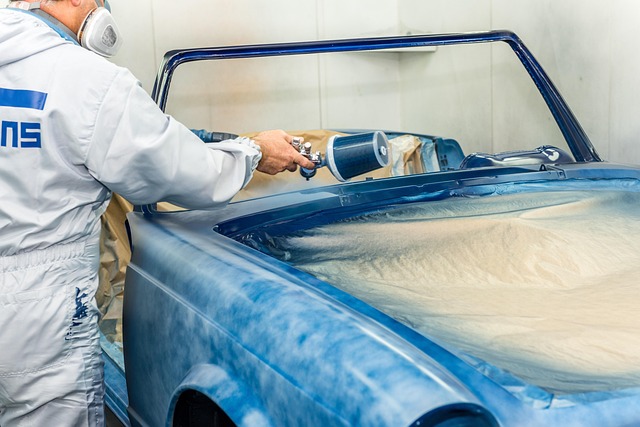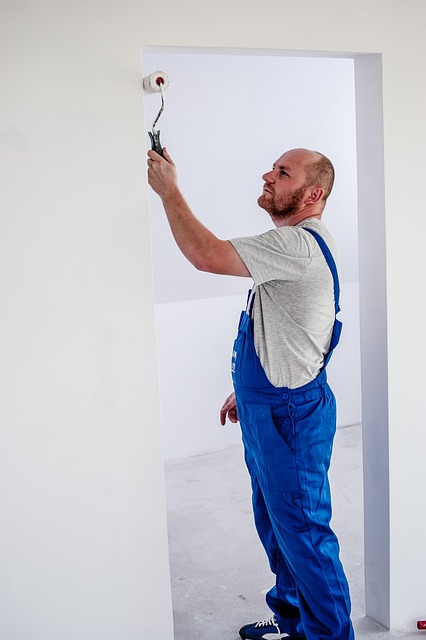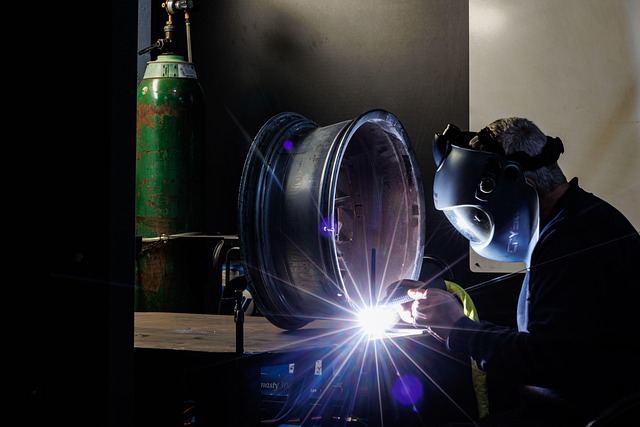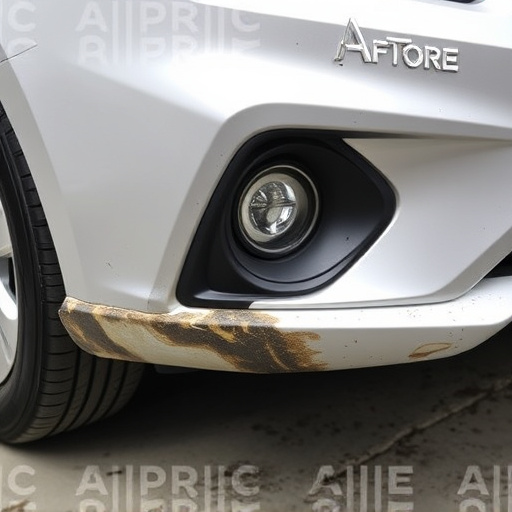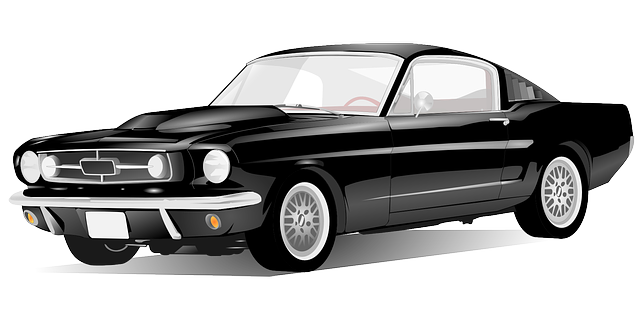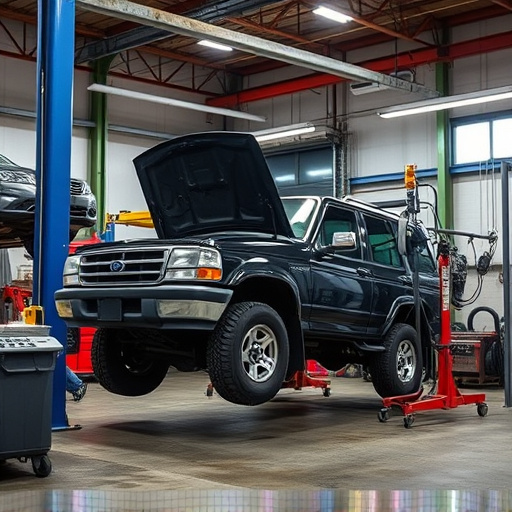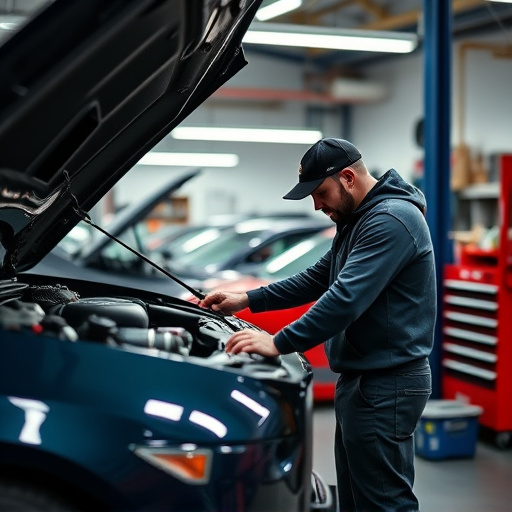Waterborne paint technology revolutionizes auto body repair with eco-friendly practices, superior coverage, quick drying times, and smooth finishes. Professionals use specialized skills and airless spraying techniques for precise applications, while thorough surface preparation ensures optimal adhesion. This technology reduces VOC emissions, combating climate change, and offering durable, high-quality repairs for traditional and emerging methods like paintless dent repair.
“Discover the future of auto repair with The Complete Guide to Waterborne Paint Technology. Dive into this comprehensive exploration of a game-changing approach to vehicle refurbishment. Learn about the fundamental composition and distinct advantages of waterborne paints, which offer environmental benefits while enhancing repair outcomes. From understanding application techniques for flawless results to exploring emerging trends, this guide unveils the secrets behind this innovative technology, positioning it as a cornerstone in modern automotive maintenance.”
- Understanding Waterborne Paint Basics: Composition and Advantages
- Application Techniques for Optimal Results in Auto Repair
- Environmental Benefits and Future Trends in Waterborne Paint Technology
Understanding Waterborne Paint Basics: Composition and Advantages
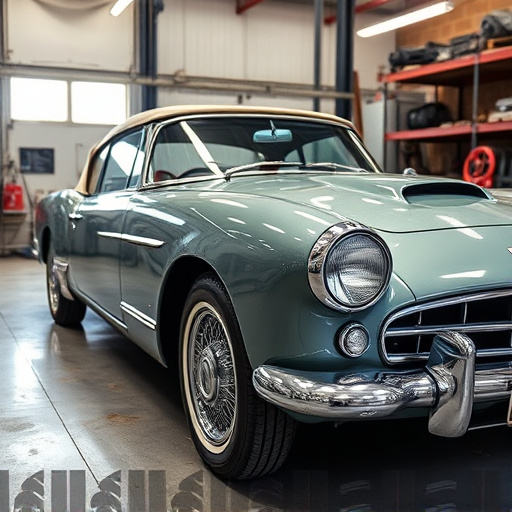
Waterborne paint technology has revolutionized the automotive industry, offering a sophisticated and eco-friendly solution for auto body repair. Unlike traditional paints, waterborne paints are formulated with water as their primary solvent, replacing toxic organic solvents. This composition brings numerous advantages, making it a preferred choice for both professionals and DIY enthusiasts in the realm of auto maintenance.
The basic structure of waterborne paint consists of pigment, resin, and various additives suspended in water. The unique advantage lies in its low volatile organic compound (VOC) content, which significantly reduces harmful emissions during application. This makes waterborne paint a safer option for vehicle repair services, contributing to improved air quality. Additionally, it offers excellent coverage, fast drying times, and a smooth finish, ensuring high-quality auto body repair results.
Application Techniques for Optimal Results in Auto Repair
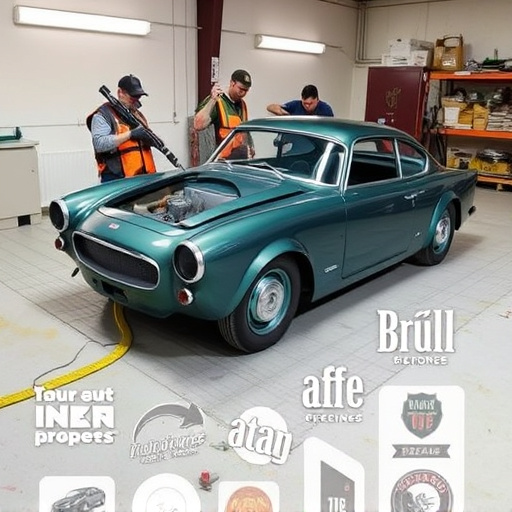
In auto repair, achieving optimal results with waterborne paint technology requires a deep understanding of application techniques specific to this advanced system. Professionals skilled in collision damage repair, hail damage repair, and car dent repair leverage airless spraying for precise, even coats, ensuring minimal overspray and optimized coverage. This method not only enhances efficiency but also promotes environmental friendliness by reducing the need for harsh solvents.
Additionally, proper surface preparation is paramount. Thorough cleaning, degreasing, and sanding ensure a smooth base for waterborne paint to adhere, resulting in longer-lasting, high-quality finishes. Experts in these repairs meticulously inspect panels for any imperfections, using specialized tools to address pitting, rust, or other defects before application. This meticulous approach culminates in a seamless blend of new and repaired sections, making the vehicle appear as good as new.
Environmental Benefits and Future Trends in Waterborne Paint Technology
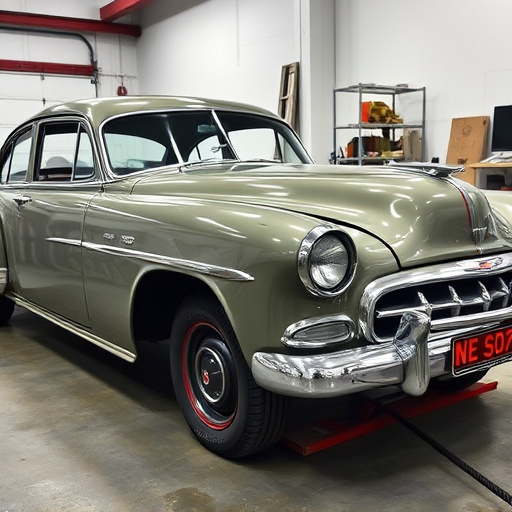
Waterborne paint technology is not only an innovative approach to auto painting but also offers significant environmental benefits. By using water as the primary solvent instead of toxic chemicals, this technology reduces the release of volatile organic compounds (VOCs), which is a major contributor to air pollution and greenhouse gas emissions. This shift towards eco-friendly practices aligns with global efforts to combat climate change, making it a responsible choice for collision repair services and those dedicated to sustainable practices.
Looking ahead, future trends in waterborne paint technology promise even greater advancements. Researchers are exploring ways to enhance the durability and adhesion of these paints, ensuring they withstand extreme weather conditions and provide long-lasting results. Additionally, there is a growing focus on developing waterborne formulations for specialty applications, such as paintless dent repair, further expanding the versatility of this technology in the collision damage repair industry. These continuous improvements highlight the potential for waterborne paint to revolutionize not only traditional auto painting but also emerging techniques like paintless dent repair.
Waterborne paint technology has emerged as a game-changer in the auto repair industry, offering not only superior quality finishes but also significant environmental benefits. By understanding the composition and advantages of waterborne paints, mastering application techniques for optimal results, and staying informed about future trends, professionals can ensure they’re using one of the most innovative and sustainable technologies available. This guide has provided a comprehensive overview to help auto repair shops navigate this technology and stay ahead in their field.


